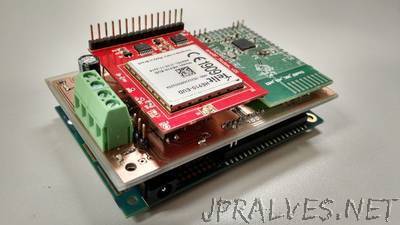
“The project proposes a wireless-level sensor network for the enhancement of essential urban services. By means of an ultrasonic sensor it is possible to determine the distance of an object/obstacle from the sensor. In this way the level of liquids or solids can be determined with the same sensor. Immediate applications are listed below: Monitoring of water level in homes and buildings. In Brazil, there are regions where water supply is scarce (eg, northeast) and other regions with sporadic water crises (eg São Paulo 2014-2015). By knowing the level of the water reservoirs in a significant number of buildings it is possible to direct water to the most critical places, that is, to make an intelligent water management. In addition, the system can provide data to regulatory agencies and allow monitoring of the quality of the service, since the information disclosed by the sanitation companies does not always match what is reported by the population; Level monitoring of water in rain and river galleries (urban drainage). Several Brazilian cities suffer from flooding points, which causes great damage to the government and individuals. Through the continuous monitoring of the water level of rivers and storm drainage systems, it is possible to identify flood risk, clogging points and bottleneck points in drainage. This makes possible the intelligent management of the urban drainage and management system; Level monitoring of garbage in dumps or litter bins arranged in city streets. The collection of urban waste is an essential service for the control of diseases, for the well being of the population and for environmental management. Moving a collection team to empty dumps creates unnecessary cost; on the other hand, leaving a dump with waste for a long time causes problems due to the deterioration of the present materials. By knowing the filling state of the dumps, dump buckets and collection points, the person responsible for the collection can trace an efficient route and also ensure that the collection time is fulfilled. Efficient routes mean less spending on fuel, staff and fleet reduction.”
